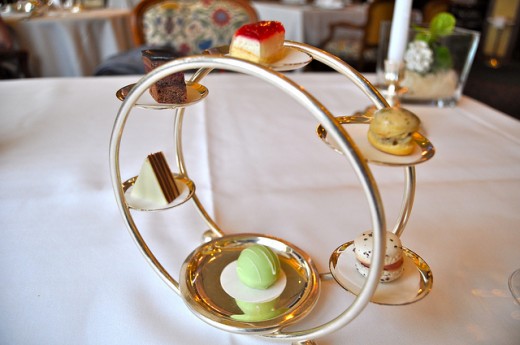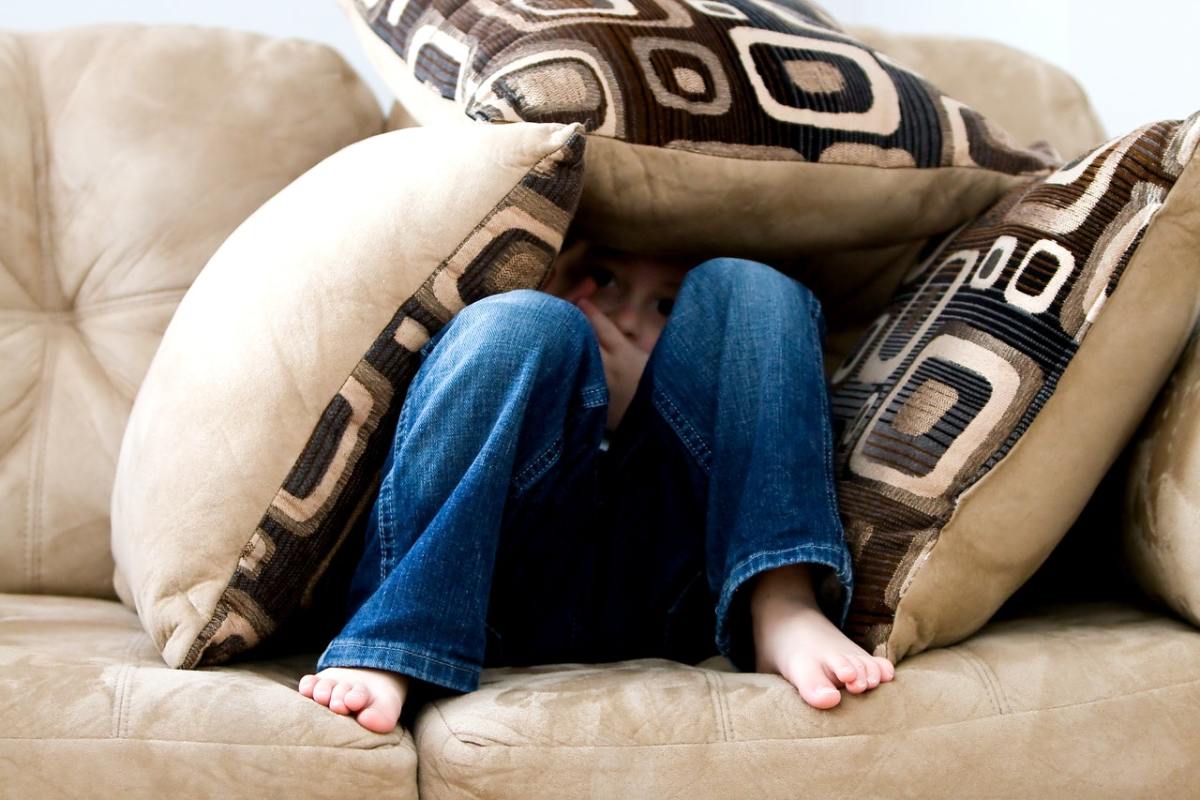Can Age Restrictions Really Help Curtail Screaming Children at Restaurants?
There are certain things in life that require age restrictions.
For R-rated films, children under 17 must be accompanied by an adult or guardian to watch them. For the legal drinking ages, some countries only allow people 18 and up to consume alcohol, whereas few others (like in the USA) only allow those 21 and over to do so likewise. Many cruise ships determine which places people of a certain age can or cannot go, such as casinos and “quiet pools” reserved for adults.
But should putting tabs on ages curb and prevent many a diner’s pet peeve: screaming children at restaurants?
Should a policy restricting patrons to be at or above a certain age prevent fellow ones from having to put up with their antics? Should dining venues post rules on how old patrons are to eat? Do people agree or disagree with decisions on those policies?
Seriously - Who Wants THIS at your Restaurant?
A Need to Ban Them
Many diners deal with children’s lack of behavior when eating out. They’d usually cope with children tap-dancing on centuries-old floors, cereal in their finest wine, and peas in their hair.
But the usual distraction is the cacophony of many a discordant choir of screaming banshees. Some of the lyrics of their squalling cantata include, “Daddy, I want some candy!" "Mommy, I’m hot!" "Uncle Bob, I want to go watch TV!” Some people need to raise their levels of noise above normal to keep up with small talk.
Even some restaurant owners have their reasons to put tabs on age. Mike Vuick, owner of country club restaurant McDain’s, had his own since imposing a policy only allowing patrons 6 and older in summer 2011. He agreed that there’s "nothing wrong with babies,” but said that ranks of parents “can't control their volume.”
Dieter Hein, of Hacienda (a German restaurant where only diners at or above 12 years old can dine), agreed, “I don’t hate children, but I have had too many negative experiences* in the past.”
* with screaming and misbehaving kids
...and THIS?
The Dessert Looks Good...

The Perfect Place to Outlaw them Agewise
Usually, the restaurants that are “just right” to impose many a “no children policy” are those that are considered fine dining. (Read the discussion: it means fancy restaurants.)
Some of them have décor reminiscent of the Regency, Baroque, and/or Victorian Eras. Some others bedeck them with modern elements that are still elegant for their types. Waiters usually serve in tuxedos. Live music by palm court orchestra, string quartet, or harp or piped-in classical music accompanies the dining mood.
But the primary focus of all highly upscale restaurants is the cuisine that wouldn’t suit a pre-adolescent, hamburger-loving crowd. Some of them serve high-end fusion cuisine while some others serve haute cuisine (codewords for fancy French or at least French-style cuisine).
To preserve their customers, they either allow children to be at their very best behavior or to make them wait it out until they are at a certain age. Patrons of such restaurants can’t really tolerate dresses ruined by hunter’s sauce-covered beef or Gruyere-smothered potatoes au gratin. They also don’t need traces of ring-shaped cereals in their vintage wines or their piercing screams peppering the background music.
It Bans Kids Under 10, and It's AT DISNEY!
Take a look at Victoria And Albert’s, for example. It has décor and table elements that scream Victorian era in your face. Guests dine on fine linen-draped tables in their finely carved chairs, receive long-stemmed roses (for the women), and listen to a live, glistening harp. Men must wear suits and/or evening jackets and women need to wear dressy attire.
The menu is a 7 to 10-course, prix fixe celebration of highly upscale American cuisine. Think crème brulee and Kobe beef – no macaroni and cheese or hot dogs! A policy on age says it best, “Guests ages 10 and above are invited to dine at this establishment.”
Believe it or not, it is located at the Walt Disney World Resort! Most people wouldn’t expect such a fancy restaurant in a vacation destination where kids whine when queuing for a photo with Mickey Mouse. But lo and behold – it’s situated at the Grand Floridian Resort and Spa, the finest resort hotel in the complex.
What an ideal place for adults to indulge in fine food without cereal in wine!
See? Even Places as Casual as this Bans Kids!
Even casual restaurants also play the age rule game. Again, McDain’s seemed unusual for a fancy eatery. It serves casual cuisine with beer-battered chicken and sundaes, a bar with TV set, and furnishings that look like any casual venue in your neighborhood. But it only has allowed kids ages 6 and up since 2011.
The Sushi Bar in Alexandria, VA, serves only patrons 18 and older just to make it a cozy dining experience.
Another Example

Some Parents Don’t Agree with “No Children Allowed” Rules
There are some parents that don’t agree with age-related rules at restaurants. Some want the whole family, including under 5’s, to dine with them. Some can’t afford a babysitter or relative to watch over them while they delve into gourmet cuisine distraction free. Some are adamant that their kids all behave like “little angels.”
But the thing about those policies on age at restaurants is that it irks myriad parents of autistic children. Whether he or she is six or not, he or she would be subject to a lot of sensory cacophony. Elements include the bright lights, hubbub of people chatting, and food that doesn’t suit his or her palate or preference to texture. All of them can spark a meltdown, which includes the screaming.
Even with therapy, some of the parents whose kids have the disability are disgruntled because their kid is younger that the posted age. One mother of such a child wrote, “The majority of our kids start therapy under the age of six, so we can’t have restaurants telling us we don’t belong.”
Should Certain Restaurants Put Age Restrictions?
Is Etiquette a Better Solution?
Restaurant patrons’ biggest reason for complaints is the lack of good manners in others' children. But is it just as effective as raising bars for their ages? The answer is a resounding yes.
Parents don’t need to enroll children into charm schools or finishing schools that drain them financially to better their etiquette. They just need to teach them basic table manners. They need to convince them to eat with their mouths closed, put their napkins on their laps, and so forth. Some parents even make them wait until they are of certain age to dine out.
Parents with autistic children need further planning. They should ask their teachers or therapists to write social stories on eating out as well as having them look at pictures of the desired eatery. It’s not really that complicated to better their behavior before eating at a restaurant.
Don't you wish there's a similar program like that for children 12 and under?
Should children be barred from certain restaurants? Can doing so allow adults freedom from their misbehavior both visual and auditory? Can policies on age allow them a peaceful meal? While a few disagree, many people wholeheartedly agree that such rules make eating out a pure pleasure.
After all, many of them want the little screamers in restaurants meant for them, like fast-food chains with playgrounds, rather than the place with the stuffiest yet most enjoyable cuisine ever.
But parents are strongly urged and required to teach their kids table manners. It will save them and other diners extra grief in the long run.
This Hub is a sequel to When Bad/Screaming Children In Restaurants Make Others - Well, Scream!
© 2011 Tiffany J. L. Alfonso








